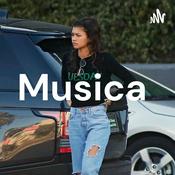Episódios Disponíveis
5 de 339
- The Round-Up: 2025’s Highs, Lows, and WTFsWe are back this week with our monthly edition of the Art Angle Round-up, where co-hosts Kate Brown and Ben Davis are joined by a guest to parse some of the biggest headlines in the art world. As we close out a busy calendar year—and for the last roundup of the year—we are reviewing all of 2025 and the trends, themes, and stories that defined it with Andrew Russeth, Artnet Pro editor and art critic. It's been a whirlwind of a year. We take a look at the art market, where slumped sales, gallery closures, and existential dread dominated the business up until November, when New York’s fall auctions saw the narrative take a turn, something that seemed to sustain across the primary market at Art Basel Miami Beach. We discuss what this could mean for 2026. In the realm of politics, Trump 2.0 began, which ushered in a wave of policy shifts, cultural tensions, and uncertainty that reverberated across the art world, from federal arts funding to museum governance and international cultural exchange. We also ask whether the art world did finally go post-woke, a question Davis posed at the top of the year, the return of digital art, and the ongoing power of red chip art. And it was a year of profound transformation for institutions, which are facing a multi-front crisis due to the changing expectations from the public, exploding costs, and a shifting political landscape. And, of course, there are also some fun stories in the mix, because this is the art world, a place that is known to be rather unusual.--------48:39
- The Magic of 'The Artist's Way'Millions of people know The Artist's Way. First published in 1992, the book began as notes for a class that its author, Julia Cameron, taught on creative self-discovery or, as she sometimes prefers to call it, “creative recovery.” It found a huge audience, and today you can find Artist’s Way groups all over the world. Cameron’s original The Artist’s Way offered a 12-week path towards overcoming artistic blocks. The book was subtitled “A Spiritual Path to Higher Creativity,” and it spoke of plugging into a current of what she called “spiritual electricity.” But her techniques were practical and easy to grasp. Rituals from The Artist’s Way such as starting your day by writing out three pages of unedited text, known as "doing your Morning Pages," have become part of the creative process of many, many artists, musicians, and writers. More than three decades after its publication, The Artist’s Way continues to find new followers, and even got a new bump of popularity during the 2020s. And Julia Cameron herself has returned this year with The Daily Artist’s Way, offering a new way in for fans. Cameron agreed to speak to national critic Ben Davis to revisit the origins of her famous method and how she’s tweaking it now in this new book.--------29:00
- Re-Air: Uncovering the Louvre’s Hidden StoriesYou've been hearing a lot about the Louvre lately. Last month, thieves broke into the Paris Museum in broad daylight when the museum had just opened and made off with eight pieces of royal jewelry. The spectacular heist captured the world news cycle and the imagination of the internet. But why are people so obsessed with the Louvre in general? What is it about this museum in particular? We decided to re-air a recent episode where we look at the enigmatic institution and dive into the many secrets and stories that it holds. The Louvre is among the largest, most-visited, and best-known museums in the world, and for nearly too many reasons to count. It’s home to some of the most celebrated works of art, from the Venus de Milo to the Mona Lisa. Its blended contemporary and historic architecture is astounding. And it also has a truly formidable past, stretching back through time, well before the building became a museum in 1793. An institution and collection that has been a quiet witness to so much history and change is bound to have stories to tell. Elaine Sciolino, contributing writer and former Paris bureau chief for the New York Times, has captured many of these stories in her newest book, Adventures in the Louvre: How to Fall in Love with the World’s Greatest Museum, which came out in April with Norton & Company. Sciolino is acclaimed for her chronicles of French history, and she’s the author of the New York Times bestseller The Only Street in Paris, The Seine, and La Seduction. And at the Louvre, she spoke to everyone, from the guards to the lead curators, and received unprecedented access to rooms I didn’t even know existed. Senior editor Kate Brown caught up with Elaine, who is based in Paris, to discuss the enigmatic and ever-enchanting Louvre, and what she learned from her exploration of its many halls, backrooms, and basements.--------35:19
- A Long, Strange Trip Through the New York Gallery SceneLast year, Jack Hanley—one of New York’s most beloved and idiosyncratic gallerists— announced he would close his gallery after 37 years in business. The news landed with both surprise and sadness: Hanley has always been a disruptor, a dealer with a sharp eye for fresh talent, who followed instinct over market logic. A gem of the New York art scene and beyond. Over the decades, Hanley gave early shows to artists like Günther Förg, Christopher Wool, Sophie Calle, and Christian Marclay—and all of that was long before they became art-world names they are now. He helped define the San Francisco scene of the 1990s, championed artists who blurred lines between high and low and made challenging work; and more recently, even gave the digital artist Beeple his first-ever gallery show. As a former Grateful Dead roadie, avid orchid grower, art fair founder, and having run galleries in several cities, he’s seen a lot. And played music with more than a few art dealers. Hanley joins senior editor Kate Brown to discuss transformation and continuity in the art world and art industry. We talk about what’s changed, what hasn’t, and what keeps art interesting, even as the market has grown more absurd.--------29:12
- Do We Still Need All-Woman Art Shows?Before the idea of feminism took shape, there was what writers once called “the woman question.” The phrase comes from the querelle des femmes—a centuries-long debate in Europe about women’s rights, intellect, and place in society. One of the first to take it up was Christine de Pizan, the Italian-French court writer who, in 1405, published The Book of the City of Ladies. At a time when most women were excluded from education and public life, de Pizan challenged misogyny head-on, laying some of the earliest groundwork for what we now understand as feminist thought. That question—what is a woman’s place in culture and history?—has echoed ever since. In 1971, the art historian Linda Nochlin famously reframed it by asking: “Why Have There Been No Great Women Artists?” We have a clear answer: there had been great women artists all along, but their stories were often overlooked, dismissed, or erased. A new exhibition at the recently opened Museum of Modern Art in Warsaw hones in on that conversation. "The Woman Question: 1550–2025," curated by Alison M. Gingeras, gathers nearly five hundred years of women’s creative production—from Renaissance pioneers like Sofonisba Anguissola and Lavinia Fontana, to Baroque heroines such as Elisabetta Sirani and Artemisia Gentileschi, and contemporary artists including Betty Tompkins and Lisa Brice. With more than 200 artworks, the exhibition focuses on how women saw and depicted themselves and the world, and how the represented power, resistance, desire, and violence. Through portraits, allegories, and bold depictions of female experience, these artists reveal how women have long claimed creative agency despite the structures built to contain them. On this episode of The Art Angle, Gingeras joins senior editor Kate Brown from Warsaw, Poland, to talk about early women art stars, recent rediscoveries, and why, after all this time, we still need all-women exhibitions.--------36:45
Mais podcasts de Arte
Podcasts em tendência em Arte
Sobre The Art Angle
A weekly podcast that brings the biggest stories in the art world down to earth. Go inside the newsroom of the art industry's most-read media outlet, Artnet News, for an in-depth view of what matters most in museums, the market, and much more.
Site de podcastOuça The Art Angle, Tantos Tempos Podcast e muitos outros podcasts de todo o mundo com o aplicativo o radio.net

Obtenha o aplicativo gratuito radio.net
- Guardar rádios e podcasts favoritos
- Transmissão via Wi-Fi ou Bluetooth
- Carplay & Android Audo compatìvel
- E ainda mais funções
Obtenha o aplicativo gratuito radio.net
- Guardar rádios e podcasts favoritos
- Transmissão via Wi-Fi ou Bluetooth
- Carplay & Android Audo compatìvel
- E ainda mais funções


The Art Angle
Leia o código,
baixe o aplicativo,
ouça.
baixe o aplicativo,
ouça.






























